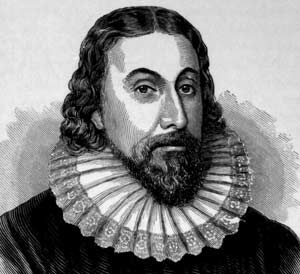Essay: Beowulf as Mirror of Culture and Religion in Medieval Britain
Beowulf is an epic poem that
relates the adventures of an Anglo-Saxon hero, composed to be recited in
England in the early 8th century. It was put into manuscript form,
in Old English, in the late 10th century, and the only surviving
manuscript was partially destroyed by fire in 1731. Though the text as it was
originally related is not available to us today, the many hands through which
it passed and the numerous reincarnations thereof make this poem an invaluable
tool. Through inferences about the changes made to the text as it changed
hands, we may gain insight into the cultural values and religious beliefs prevalent
in early Medieval Britain.
The poem relates events that
took place two centuries prior to its composition. It centers around two south
Scandinavian tribes, the Danes and the Geats. The original audience of Beowulf,
that of its oral incarnation, probably considered themselves descendents of the
Geats (of whom Beowulf derived). Thus, much in the manner that the Aeneid
served to glorify the Trojans almost a millennia before, Beowulf ostensibly
served to enhance the pride of the English in their ancestry, and to immortalize
their ancestry as heroic and noble (Beowulf went on to become a king).
We may glimpse additional
information about the original audience of Beowulf from the language it uses
and its structure, and conversely we may deduce from these about the purpose of
the text. Beowulf is written in Old English, as opposed to the intellectual
language of the era, Latin. We may thus learn that the poem was meant to relate
to the masses. This theory is backed by the structure and language of Beowulf.
These are rather straightforward: the story begins with a rather informal
Genealogy of the main characters; the events are ordered chronologically, with
relatable themes recurring many times over, such as the value of loyalty and
courage. Religious imagery is often utilized as well.
The religious background of
Beowulf has been long contested among scholars. It appears that the emotional
core of the poem is in paganism, that is, it is paganism which is used to the
strongest effect in the telling of the tale. However, the text is very
religiously heterogeneous, incorporating references to Christianity and
fatalism as well. We may ascribe this inconsistency to the many incarnations of
the text: scholars have hypothesized that whereas the original author and
audience were predominantly pagan, the transcriber two centuries later
incorporated the updated Christian beliefs of his time into the text, thus
resulting in the "mishmash" of beliefs inherent in the manuscript.
Beowulf is thus a most
unique literary specimen. Although the numerous forms the poem took on
throughout the centuries make it decidedly more challenging to analyze, it is
exactly this dynamic aspect that renders it so invaluable to the literary
analyst and historian: a text through which we learn of values not pertaining
to a single point in time but an actual evolution of values over a range of
history.
Sources cited:
The Norton Anthology
Wikipedia: http://en.wikipedia.org/wiki/Beowulf
Introduction to British Literature lectures by Dr.
Alberto Gabriele









Comments
Post a Comment
Hey friend! 🌈 I can't help with your assignments but maybe other readers can. Good luck! 🤞